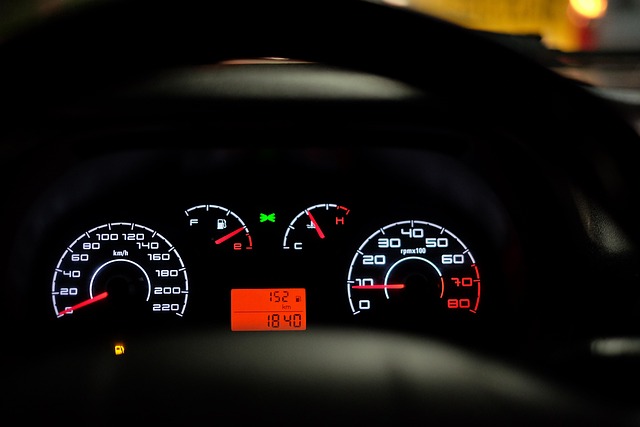Looking to register your car in California? This comprehensive guide will walk you through the process step by step. Understanding the state’s unique registration requirements is key, beginning with gathering essential documents like proof of ownership and insurance. Next, verify your vehicle’s identity using its unique VIN (Vehicle Identification Number) through a DMV-approved verifier or third-party tools. Once confirmed, visit your local DMV or utilize online services to complete registration, pay fees, and obtain your new license plates.
- Understand California Car Registration Requirements
- Gather Necessary Documents for Registration
- Visit Your Local DMV Office or Use Online Services
- Verify Vehicle Identity with VIN (DMV and Third-Party Tools)
- Complete Registration, Pay Fees, and Receive Plate
Understand California Car Registration Requirements

Before registering your car in California, it’s essential to understand the state’s specific requirements. The California Department of Motor Vehicles (DMV) mandates that all vehicles operated within the state be properly registered and bear valid license plates. This process involves several steps, including providing proof of insurance, passing an emission test, and submitting accurate vehicle information. One crucial aspect is ensuring your car’s Vehicle Identification Number (VIN) is verified. The DMV recommends using a trusted VIN verifier, such as those offered by third-party services or even some mobile vin inspection tools, to cross-reference the provided VIN with official records.
A valid and accurate VIN is critical for several reasons, not least of which is ensuring your vehicle’s history is accurately represented. A mobile vin inspection or using a specialized VIN verifier can help check for any discrepancies or hidden issues associated with the car’s past ownership, accident history, or odometer rollback attempts. This step is as vital as providing proof of insurance and passing the emission test; it ensures a seamless registration process and your vehicle’s safety on California’s roads.
Gather Necessary Documents for Registration

Before heading to the California Department of Motor Vehicles (DMV) to register your car, make sure you have all the essential documents in order. The process typically requires a variety of paperwork, ensuring a smooth transaction. Begin by gathering your vehicle’s registration from its previous owner, along with any proof of insurance and a valid driver’s license.
Additionally, the DMV will need the Vehicle Identification Number (VIN) inspection report, which can be obtained through a mobile vin verification service or by visiting an authorized inspection station. This step is crucial as it verifies the vehicle’s history and ensures it meets safety standards. Having these documents ready will save you time and effort during the registration process.
Visit Your Local DMV Office or Use Online Services

Visiting your local DMV or using online services are both viable options to register a car in California. If you opt for the traditional approach, be prepared to visit a DMV office where you’ll need to provide essential documents and pass necessary inspections. Staff will guide you through the process, which involves verifying your vehicle’s unique Identifier (VIN) through their system. This step is crucial to ensure that the car is genuine and has not been reported stolen.
For a more convenient option, California’s DMV offers online services that allow you to register your vehicle remotely. This method streamlines the process, saving you time and potential trips to the office. Even here, a mobile VIN inspection or a vin inspection using an approved verifier like the DMV’s own system can be part of the initial verification process. Ensure you meet all requirements before initiating the online registration to avoid any delays.
Verify Vehicle Identity with VIN (DMV and Third-Party Tools)

Before registering your car in California, it’s crucial to ensure the vehicle’s identity is verified, and one effective method is through a Vehicle Identification Number (VIN) check. The DMV offers a VIN verifier tool that allows you to cross-reference the provided VIN with their database, confirming the vehicle’s make, model, year, and other critical details. Additionally, third-party services provide mobile VIN verification, offering a convenient option for those who prefer not to visit a DMV office.
These vin inspection processes are essential steps in ensuring the accuracy of your car’s registration, preventing potential issues with vehicle history reports, and helping you avoid fraud. With the availability of both official DMV tools and mobile vin verifier apps, verifying your car’s identity has become more accessible than ever before.
Complete Registration, Pay Fees, and Receive Plate

After submitting your application and necessary documents, the next step in registering your car in California is to complete the registration process with the DMV. This involves a few key actions. First, ensure that all information on your vehicle, including the Vehicle Identification Number (VIN), is accurately verified. Utilize a trusted dmv vin verifier or even a mobile vin verifier for this critical step. Accurate VIN inspection is paramount to ensure proper registration and safety standards.
Once your details are confirmed, you’ll be directed to pay the required fees. These include registration costs and any additional taxes applicable to your vehicle. After settling the fees, you can finally receive your license plate. This typically involves a brief waiting period while the DMV processes your request and prepares your unique set of plates for collection.
Registering a car in California involves understanding clear requirements, gathering essential documents, and verifying vehicle identity using reliable methods. By completing these steps, from visiting the DMV or using online services to ensuring accurate VIN information with trusted tools, you’ll be well on your way to securing your vehicle’s registration. Remember to keep all necessary paperwork handy for future reference and timely renewals. With a bit of diligence, you’ll have successfully navigated the process, thanks in part to efficient DMV vin verifier services available today.
